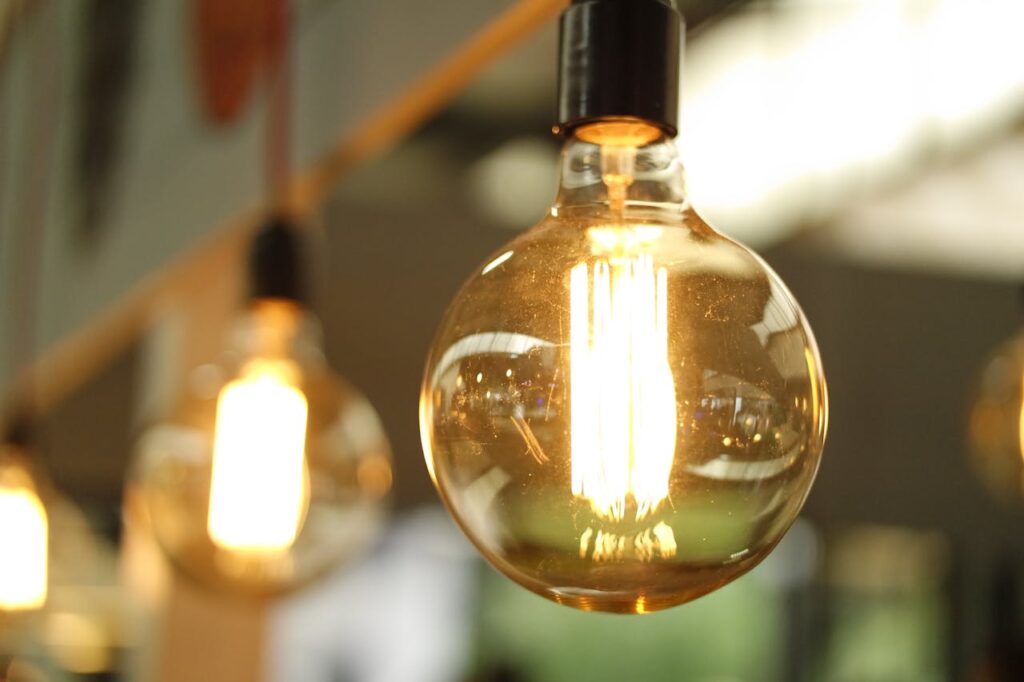How energy efficient is your home? The majority of US homes are considered energy vampires, and this term is coined because many properties consume way more energy than they should or need to so they can keep occupants comfortable and maintain internal temperatures and functions.
Energy efficiency in the home, however, is about more than simply heating and cooling; efficiency is about how much energy you consume overall for all your daily habits and activities which can translate to higher bills and increased consumption.
There are many free, low-cost, alongside more expensive options for making your home more energy efficient, and this article will explore some of them to help you cut down on those energy bills.
New Windows And Doors
Not all windows and doors are inefficient, but if they are damaged or they have not been replaced in many years, they might not be as efficient as they should be or once were.
Upgrading your doors to offer more protection can block drafts coming in and add additional security to your home. A trusted window replacement service can talk you through your options for more energy-efficient windows for your home and what your options are.
Look for windows and doors with more than one pane of glass for added protection and efficiency, and choosing low emissivity coatings will further cut your energy loss by 30 to 50%; you can use the Energy Star Climate Zone Finder Tool to help you look for recommend u-levels for your state for the best energy efficiency.
Insulation And Seals
Sealing your home from gaps that can allow air to enter and escape is a top way to reduce energy bills. From dealing with cracks in windows and door frames to adding insulation, you can start small and build up to more extensive options.
There are various ways you can insulate your home to offer more protection. Older homes especially do not often have the recommended levels of insulation advised for more energy-efficient homes, meaning you need to consult with insulation experts to ascertain your options when adding this to the property.
You can insulate walls, floors, basements, pipework, and your attic spaces. Effective air sealing and insulation can cut energy usage by approximately 10%, and for more extensive work, you might be eligible for tax cuts or funding grants through different government programs and assistance.
Increase Natural Lighting
The more natural lighting you have in your home, the less you will be reliant on artificial lighting to illuminate the property. This means opening up windows and doors and removing anything that can block light from entering, Using light-colored paint to reflect it in darker spaces, and using mirrors to help you maximize light in rooms can further increase how light and bright a room feels.
If you can, change your bulbs to ones that mimic natural light or invest in skylights for rooms to let more light flood in this way. Adding skylights to your home can also make you eligible for an IRA tax credit of up to 30% (always check prior to moving ahead to see if the credit is still applicable or its current value).
LED Bulbs
When it comes to lighting, consider the cost-effective switch to LED bulbs. These bulbs, which are ENERGY STAR-rated, use at least 75% less energy and last around 25 times longer than traditional incandescent bulbs. By making this change, the average household could save up to $215 in lighting costs per year. That is a significant amount that could be better spent elsewhere.
Lower Temperatures
A really easy and free tip is to lower the temperature on your water heater and increase it on your refrigerator and freezer.
Water heaters are the second-highest energy thieves in homes, and even reducing them to 120 degrees Fahrenheit can cut up to 10% of your energy bills over the course of a year.
You do not want to reduce them to lower than 120F, and if you are not comfortable dropping to this immediately, lower it incrementally until you find a temperature you are comfortable at. You can find hot water gauge cards from different sources online to help you do this.
For improved energy efficiency, your refrigerator should be set to 37F and your freezer to 3F. Turning your ice maker off until you need it can cut your refrigerator and freezer energy usage by up to 20%.
Unplug Electronics
Vampire electronics are those devices you leave plugged in even when they are not in use. Even if you are not using them, they will still be consuming energy, pushing up your usage and bills. It is an easy habit to fall into, and it is an easy one to break, too. Simply make it your mission to unplug anything that is not needed or in use constantly to stop them from sucking power when they are not needed. This is things like device chargers, TVs, small kitchen appliances, etc. If it does not need to be plugged in constantly, unplug it and see how much money you can save.
Programmable Thermostats
A programmable thermostat can be a great way to regulate your home’s heating and cooling and cut costs simultaneously. If you have a regular schedule or lifestyle pattern, you can program your thermostat around this. You can turn it on for a short period prior to waking up and until you leave for work. Then, have it turned off or lowered while you are out, ready to increase when you return home if required to keep your home at a more comfortable temperature.
Change Your Laundry Habits
Did you know that 90% of the energy used by washing machines is used to heat up water? These days, modern machines and detergents work just as well at lower temperatures, meaning you can reduce the heat you use to clean your clothes. If you have difficult stains, then you might not find lower temperatures as effective, but for normal soiling, cold or even warm water works just as well as water.
Remember, if you use a dryer, clean the lint from the machine regularly to improve energy efficiency. Always check your load sizes so as not to overload, and spin clothing well prior to loading it in the dryer.
Use Curtain Properly
Believe it or not, there is a right and wrong way to use curtains when it comes to heating and cooling your home. While curtains are a great privacy option, they can also be a useful tool for managing your home’s temperature, especially if they are thick and floor-length. By using your curtains effectively, you can reduce your reliance on heating and cooling systems, saving both energy and money.
In the hotter seasons, you should close your curtains during the hottest parts of the day to help keep excess heat from entering your home and improve the efficiency of your HVAC. Then, when it is cooler and there is no direct sunlight, open them again (and windows if you wish) to help cool the space.
The opposite applies during the colder months. Keeping the curtain open during the day when sunlight comes flooding in can help warm the room, and a closed curtain blocks out the colder parts of the day by offering added insulation.
How much money you can save using these tips can vary, and other factors such as how many initiatives you employ and the cost of energy will determine the actual savings amount in dollars, but small, consistent changes to your daily habits can build up over time, resulting in lowered bills.








